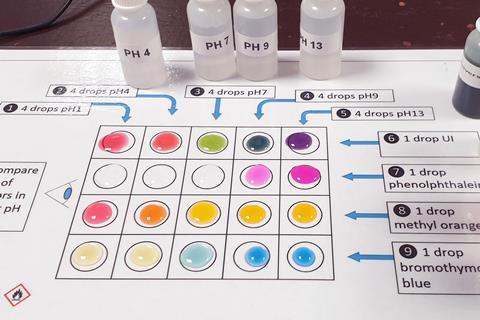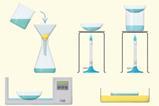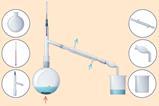David Paterson advocates a practical approach to practical work

What is chemistry? Why do we teach it to all students? What should we teach them? Why are some concepts in the curriculum and others not? How do we get our students engaged with the subject we love?
All these questions are continually on my mind. I think every teacher (not just chemistry teachers) should be asking themselves and their colleagues these questions from time to time – especially when it comes to large-scale upheaval in what we are doing day-to-day.
The pandemic and the rapid switch to remote learning gave me another prompt to think about these questions. And in particular, how practical work fits in with how I teach and how students learn.
Integral or ineffective?
Chemistry practical work is a strange beast. At times it’s argued as integral to the subject, and at times derided as ineffective recipe-following, used just because we always have. You can point to research showing the deficiencies of practical work, and to research showing how it can be used effectively. The picture is as complex as the work itself!
Where do I stand? I stand with practical work, and my belief in its power for student learning, engagement and understanding of abstract ideas about how the world works. And I believe microscale chemistry makes that job much easier.
microscale chemistry makes the learning, their personal discovery of chemistry more intimate, less intimidating, more replicable, more flexible
Take 11-year-olds – fresh into school, wide-eyed and excited at being in a ‘real’ science laboratory. Now look at them five years later – preparing for their exams (perhaps …): has that enthusiasm been sustained? Has it gone as they’ve grown up? Or gone because we’ve not given them the opportunity to think hard about their observations and skills? Have they been overwhelmed by the process of getting to those observations?
I love microscale reactions for this reason. A few drops of water and universal indicator, then a few crystals of citric acid in one side, and sodium carbonate in the other. What do they see? Imagine the rainbow fizz demonstration in a drop – done by the students, created by their hand, their own little world of discovery for a few minutes. Their field of observation is cut down to a few square centimetres, less distracted by the teacher and their friends and that complex piece of glassware. Their observations are spread out over time – that side has turned red, that side blue, the colours are heading towards each other, hang on … are those bubbles forming? Why, what’s going on? How do I explain this?
Microscale chemistry makes the learning, their personal discovery of chemistry more intimate, less intimidating, more replicable, more flexible.
Another of my favourites is the electrolysis of copper chloride. No powerpacks and beakers, large expensive volumes and filling the room with chlorine. Now with a Petri dish, a few drops of electrolyte and a 9 V battery. Safer (less chlorine), quicker (distributed in boxes and set up in minutes), more and better observations (we can see the solution decolourise, we can see the copper crystals growing towards the positive electrode), and easily repeated to consolidate (minutes to complete and clear up).
Engagement and experience
While I’m a strong advocate of using microscale practical work, I’m also pragmatic about the world we currently teach in. We must prepare our students for their final assessments, and many of the practical questions will be based on ‘traditional’ practicals. I use plenty of these in my teaching – a rich variety is preferable to a centrally dictated dogma.
If we are professionals, rather than simply ‘deliverers’ of the specification, then we should be making these decisions for ourselves, supported by evidence and experience. My students engage with chemistry better when they do practical work, they understand more clearly when they have produced the observations for themselves and they experience the joy that can come from bringing their hand, head and heart together in the pursuit of personal knowledge.














2 readers' comments